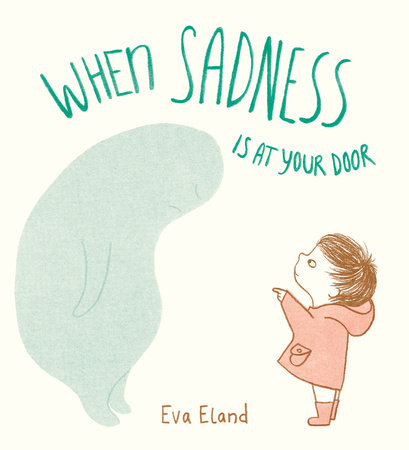When Sadness Is at Your Door
Helps Kids and Parents Approach
Big Emotions
by Jennifer Garry
I’m a fixer. For as long as I can remember, I’ve had this sort of primal maternal instinct. When I see a person in distress, I must fix it. Whether it’s offering a shoulder to cry on, a listening ear, or a great big hug, I have what I can only describe as a physical need to swoop in momma bird-like and take care of business.
After having children of my own, this urge intensified. When my oldest was born, I would carry her around in my arms almost all day long, unable to bear the sound of her wailing when I put her down. Her squished, little red face and the tiny, newborn-kitten cries that turned into full-throated shrieks broke my heart. What was she feeling in those moments that she couldn’t clearly communicate? I had to fix whatever it was.
As she and my younger daughter grew older, the fixing evolved. With bigger kids come bigger-scale problems. These days, I let them navigate the world on their own more often, figuring out how to survive without their momma flying in at every turn. Still, once they return to the safety and privacy of our home, the fixing continues. Whether it’s boo-boos, bug bites, or bullies, I fly in with my arsenal of momma-isms and try to soothe their wounds.
While this all sounds very loving and caring and motherly, it can also be another thing: suffocating.
When you’re feeling sad, there’s nothing worse than someone following you around trying to force false cheer. Sometimes, you just have to surrender to your sadness and sit with it. Maybe invite it in for a cup of hot cocoa and get to know it a little better.
This idea is at the core of Eva Eland’s debut picture book When Sadness Is at Your Door. Through simple sentences and muted illustrations, Eland gives sadness a face and encourages readers to explore it rather than hide from it — or try to fix it.
Instead of enforcing the idea that sadness is wrong or something to immediately get over, Eland takes an entirely different approach. She doesn’t make sadness scary or bad. Instead, it’s a quiet guest that shows up and tags along for a while.
While acknowledging that sadness can feel big and heavy, Eland urges readers to “ask where it comes from and what it needs.” This gentle nudge toward mindfulness and self-exploration is a huge step toward more open conversation about mental health and destigmatizing sadness and depression. It’s a way to start a dialogue with younger children about big feelings, and to let them know it’s okay to have them — even if, like the character Sadness, they’re a little amorphous and hard to understand.

For mothering, smothering fixers like me, this book asks us to come to terms with the idea that sadness is normal. It will always pop up and find us (and our babies!) when we least expect it. And instead of telling our children to not be sad or to turn that frown upside down — both of which can bring feelings of anxiety when they’re not quite sure how to do that — this book urges us to teach our children to navigate feelings of sadness in a much healthier and more helpful way. It teaches us that sometimes the best “fix” is to sit and let them be.

